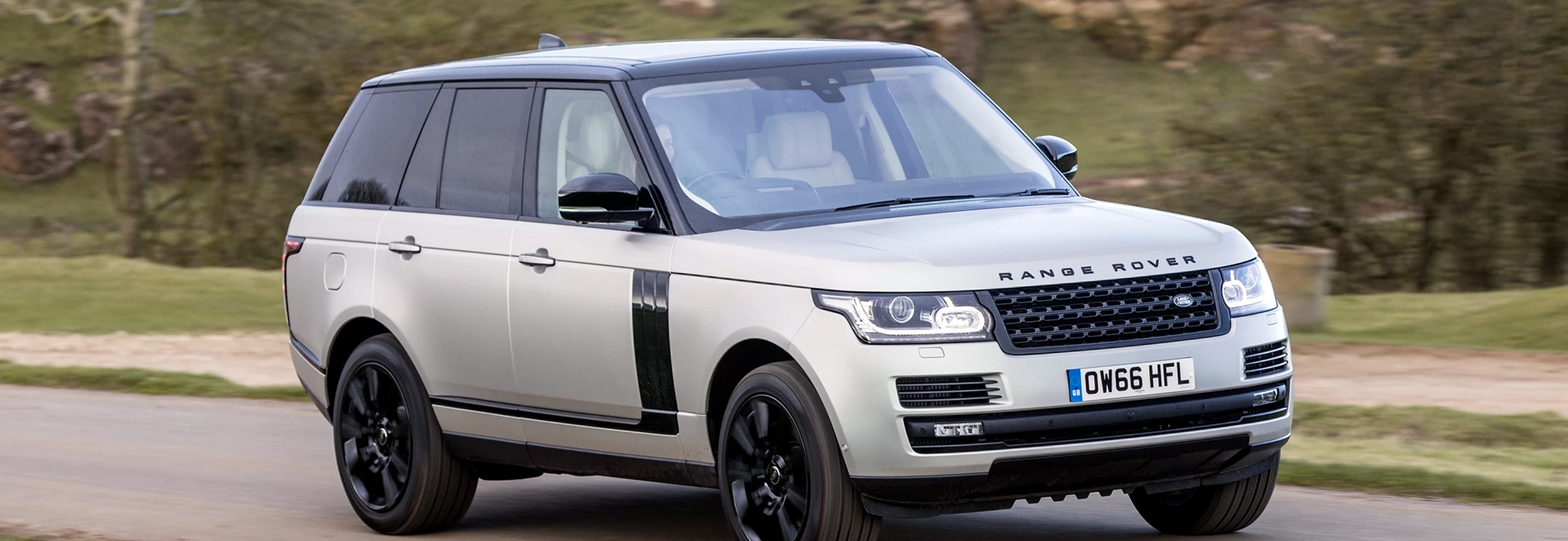The Range Rover is one of those cars. If all existence of the automobile were to be wiped out, and all that was left was one short show reel, it would certainly be on it, alongside models like the Model T, the Mini and the Mustang.
And of course, you can’t talk about the Range Rover without mentioning words like luxury, money and footballers. It is one of the most capable, alluring, four-wheel drive SUVs on sale.
Over the years, just like its German, Japanese and British competitors, it has been continually updated to reflect the technology of the times, be it aluminium construction or things like smartwatch connectivity, constantly solidifying its status as one of the most sophisticated cars on sale.
But as with anything else luxury, it’s not alone. So after almost 50 years of being on sale, has the Range Rover still got what it takes to fend off competition from the likes of Mercedes and Porsche?
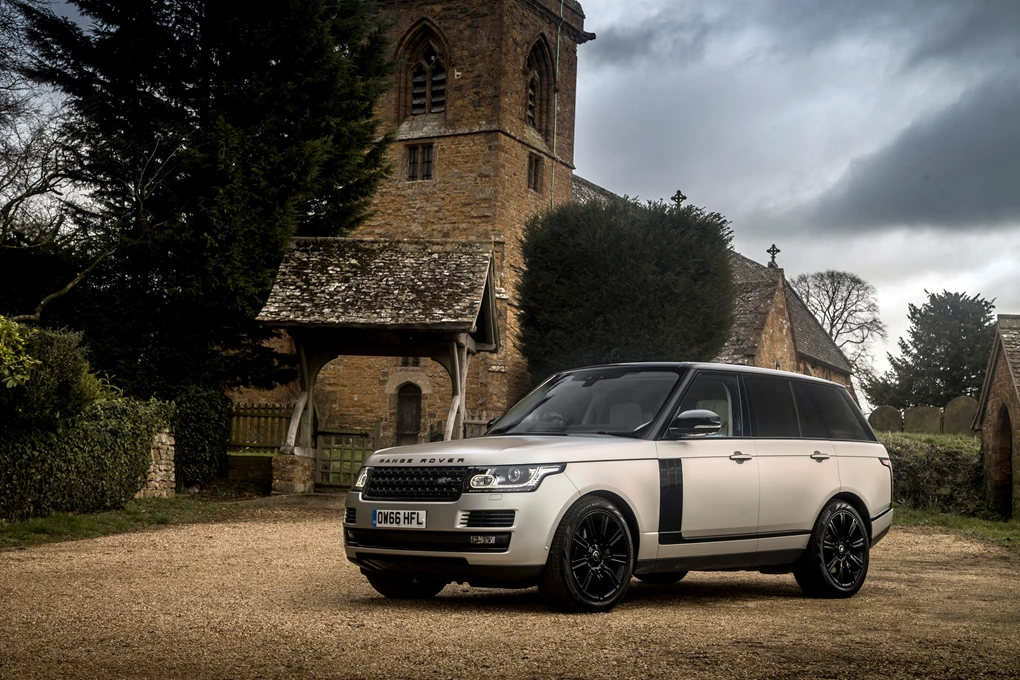
We tested the 3.0-litre V6 turbodiesel with 255bhp, which is far from the punchiest engine in the range, but with 600Nm and a 0-62 sprint time of just 7.4 seconds, it isn’t slow. And even though it’s diesel, it isn’t too efficient either – we managed an average of around 35mpg and CO2 stands at 182g/km.
Thankfully the grunt of this engine is well-silenced, along with wind and road noise, and its power can be easily gauged with the accelerator, be it for slowly cruising through town, blasting past someone on the motorway or pulling yourself up a hill when off-roading. The smooth nine-speed automatic gearbox is great at keeping up with even the most erratic inputs too.
The steering is of a similar ilk, happily adapting to different environments too, being extremely sharp and giving what is a big car a rather agile character. You can tell pretty quickly though that the steering isn’t meant for sporty driving per say, as there isn’t much feedback. Drive something more sports-orientated like the Porsche Cayenne, and you’ll see what I mean.
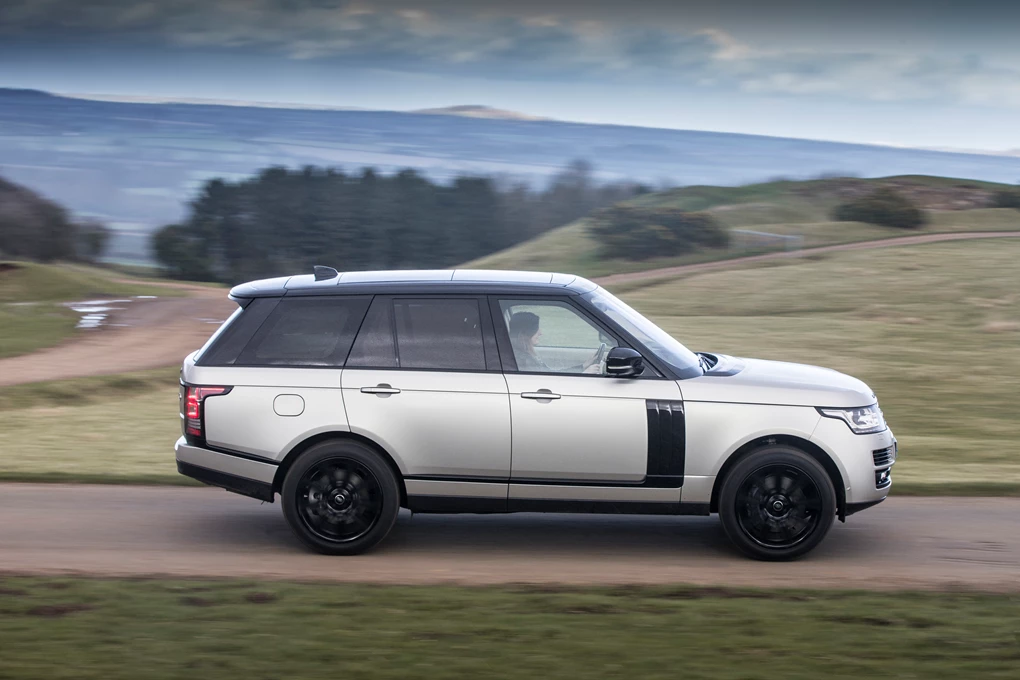
At least the Range Rover has a compliant ride to go with its relatively carefree driving experience, soaking up the majority of bumps with zero fuss, thanks in part to its air suspension. And this air suspension also allows you to higher or lower the Range Rover in accordance with changing driving conditions. For example, you can lower it when going into a tight underground car park, or higher it if you need greater ground clearance when off-roading.
Realistically, it is the latter where this suspension will be best utilised. The Range Rover is brilliantly tactile off-road, capable of heaving its almost 2.5 tonne kerb weight up and over pretty much any landscape. Its Terrain Response 2 system is integral to this finesse, offering a series of off-road specific driving modes that help appropriately distributed traction depending on driving surface – be it sand, mud snow or rocks. Aside to the specific driving modes, there is also an Auto mode, which continually adapts automatically to changing road conditions – and this will most likely be the default for most people.
As confident as the Range Rover is on and off-road however, it still feels like a very big car to drive, boasting a width similar to a Ford Transit van and a length of five metres long. Thankfully, its high-riding position and large windscreen mean you have plenty of visibility to keep an eye on surrounding cars and obstacles.

To go with its commanding driving position is a top-notch interior. The overall quality in the auditorium-esque cabin is superb, with everything being finished in either wood inlays, leather linings or high-quality brushed metal.
Our test model was the Autobiography trim, which means it was caked in a long list of luxurious features, including chunky massaging leather seats, a sliding panoramic sunroof, four-zone climate control and advanced safety features like adaptive cruise control and blind spot assist.
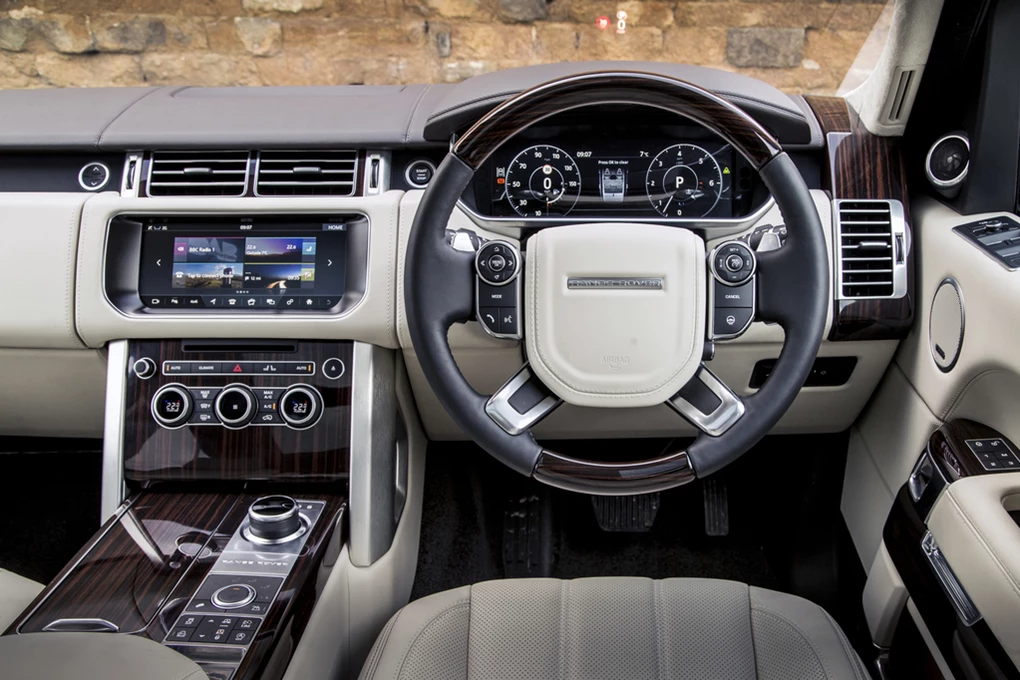
A big thing with luxury cars though is buttons – and in the Range Rover there is a button for everything. However, as convenient as some of these buttons are, it can be a little overkill, at least at first, with more buttons on offer than Willy Wonka’s elevator. The biggest omission from the Range Rover’s interior is a central infotainment toggle to control commands on the InControl Touch Pro system, which means you have to constantly reach across and take your eyes off the road to use it. The InControl Touch Pro system is still great functionality and gadgetry wise – sat-nav, customisable themes, DAB radio, internet browsing – it’s just not as slick or intuitive as the likes of a Mercedes S-Class.
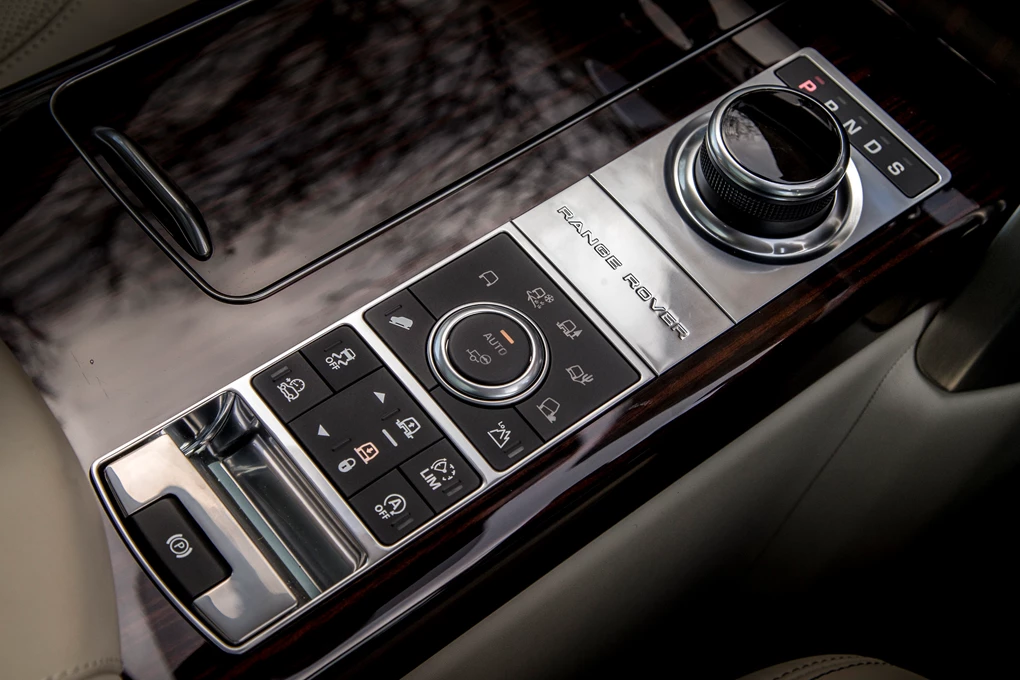
Aside to its luxury, the Range Rover is also littered with plenty of handy storage compartments, including a pop-out compartment on the doors, large glovebox and a fridge under the centre arm rest.
When it comes to the Range Rover’s rear seats, there is plenty of space for seating three abreast comfortably, with lovely, coddling leather seats and a ton of both head and leg room. For those who want to use the Range Rover as more of a limousine though, you’ll want to go for the Executive class seats package that we had fitted on our model. This package reduces the rear seats to two instead of three, but these two rear seats recline and contort in a series of different ways, have a massaging function and get their own numerous trinkets. They are a £3,265 option though.
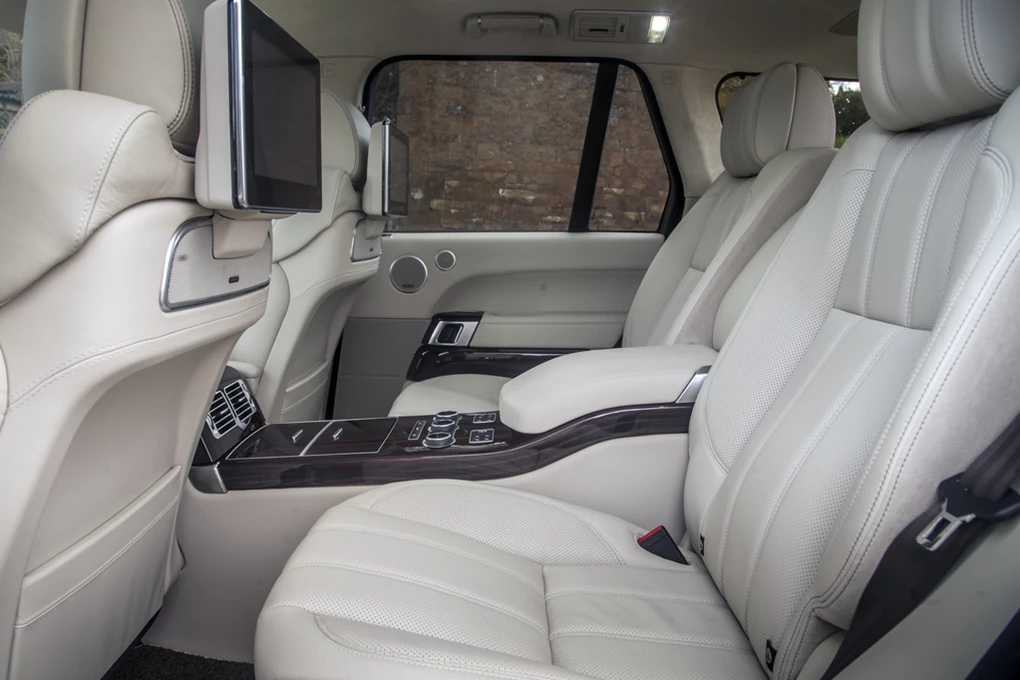
If you want to go all out, you can also opt for the seat-mounted 10-inch entertainment screens too, which cost another £2,600 – and these get similar functions to the screen up-front.
Even with all of its eccentricities, the Range Rover still manages to offer ample storage space, with up to 909 litres in the boot. The boot’s loading surface is incredibly flat and square too, which means loading suitcases and golf bags in should be a breeze. The split, electronic tailgate is a nice touch too.
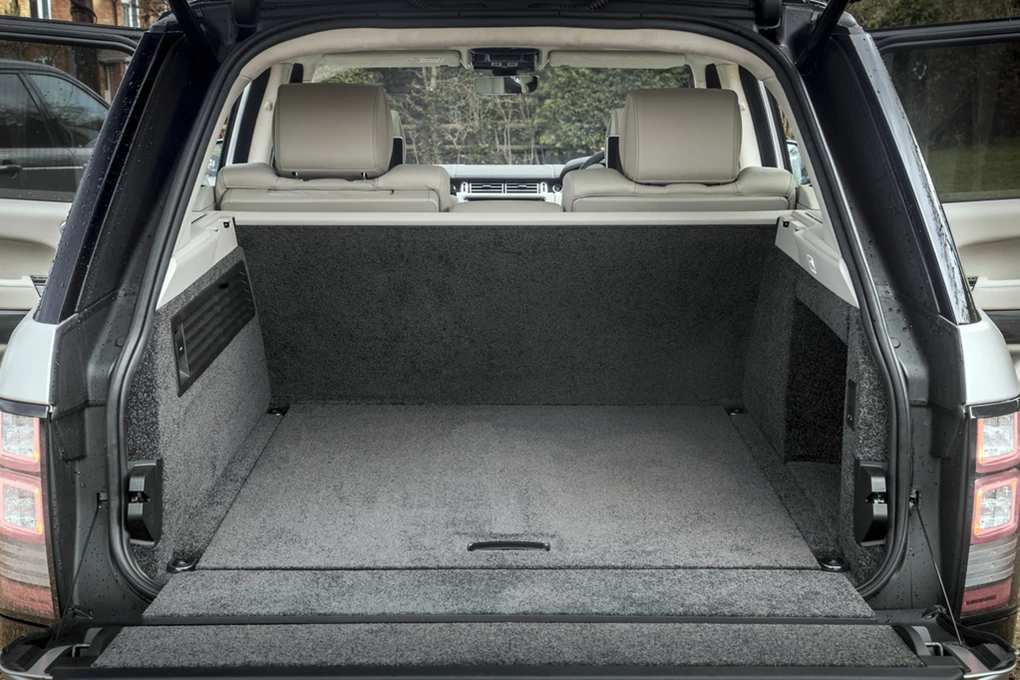
Great value for money may not be the best way to describe the Range Rover – our model costs £94,000, or £110,000 with some optional extras. But if you are after a car that feels special and can do a bit of everything, whether that’s off-roading, conference calls on the motorway or acting as a makeshift hotel if you’re kicked out of your house – then the Range Rover will happily oblige.
It may not be the sportiest in terms of drive – and some rivals may top it in terms of tech, but there’s no doubt that even after almost 50 years, the Range Rover is still at large - and there’s a very good reason for it.
